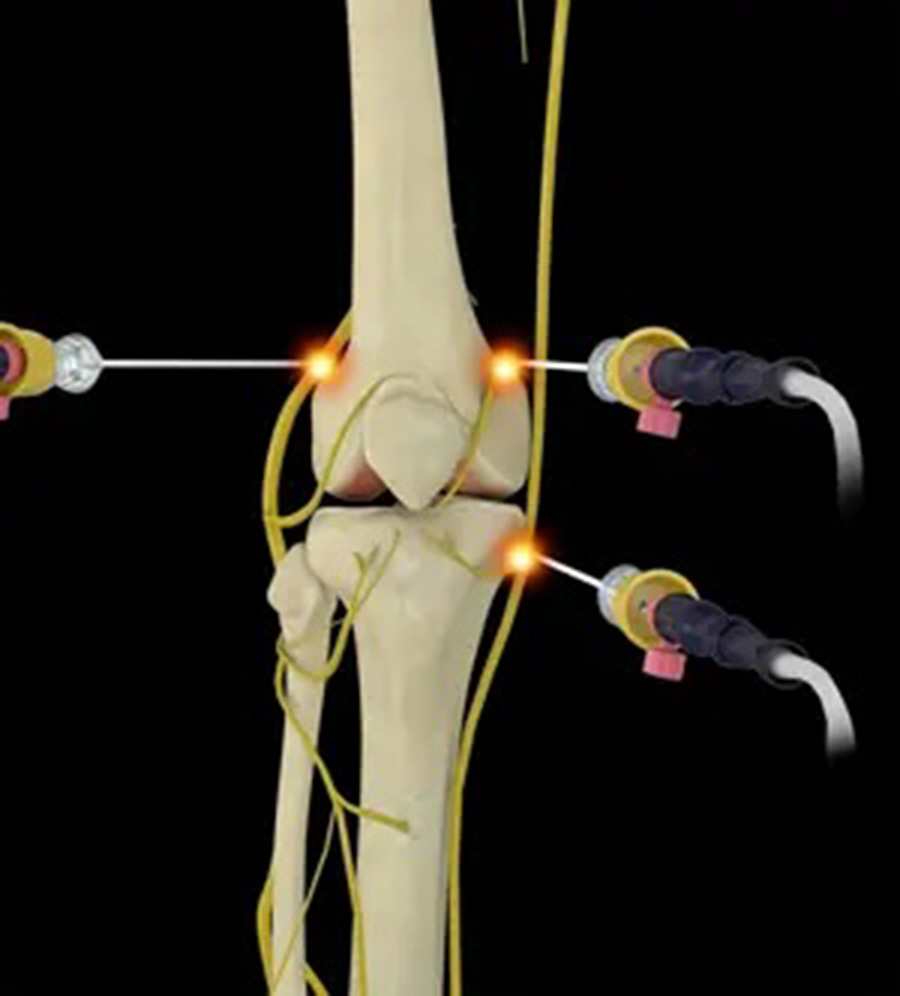Genicular Nerve Radiofrequency Ablation
Genicular nerve radiofrequency ablation (RFA) is a non-surgical treatment that offers long-term relief for individuals suffering from chronic knee pain. This targeted approach focuses on disrupting pain signals from specific sensory nerves surrounding the knee joint. For patients who haven’t found relief through medication, physical therapy, or even surgery, genicular RFA provides a minimally invasive way to reduce discomfort and improve mobility.
This outpatient procedure is commonly used for knee osteoarthritis or post-surgical pain and allows many patients to delay or avoid more invasive interventions like knee replacement. The benefits often begin within days and can last for several months.

What is it?
Genicular nerve radiofrequency ablation is a minimally invasive procedure that uses heat to interrupt pain signals from nerves around the knee. It’s commonly used for chronic knee pain, particularly in patients with osteoarthritis.
How is it performed?
Under fluoroscopic guidance, special needles are positioned near the genicular nerves. Radiofrequency energy is then used to create a heat lesion on these nerves. The procedure takes about 30-45 minutes.
Keypoint #1-Lorem Ipsum
Lorem Ipsum mon fringilla dolor felis amet fusce.
• Libero auctor
• Enim molestie iaculis
• Massa bibendum
• Ultrices varius
Metus euismod tellus penatibus in ex morbi euismod mollis.
Phasellus venenatis augue luctus sollicitudin elementum suspendisse.
Treatment Benefits
Genicular nerve RFA offers significant pain reduction and improved joint function without the need for incisions or general anesthesia. Because the procedure targets only the sensory nerves, it preserves motor function while relieving discomfort. Many patients report increased ease with walking, standing, and participating in daily activities—along with a reduced need for medications.
Who Can Benefit From This Treatment
This procedure is typically recommended for individuals with knee pain related to osteoarthritis or for those who continue to experience pain following knee surgery. It’s an ideal option for patients who are not surgical candidates or who prefer a non-operative approach. A successful diagnostic nerve block is usually performed first to confirm that the targeted nerves are contributing to the pain
Learn more about Genicular Nerve Radiofrequency Ablation by contacting the Minimally Invasive Spine and Pain Institute—our team is here to help you explore your options.
Aftercare for Genicular Nerve Radiofrequency Ablation
After undergoing genicular nerve RFA, most patients are able to walk out of the clinic the same day with minimal downtime. Some soreness or bruising may occur at the needle insertion sites, and mild discomfort may persist for a few days as the nerves begin to respond to the treatment. Pain relief often builds gradually over the course of one to three weeks. Following basic aftercare instructions can help minimize irritation and support a smooth recovery
Tips for a Smooth Recovery
Follow these guidelines to support healing after genicular nerve radiofrequency ablation:
- Limit strenuous activity and high-impact movement for the first 24–48 hours
- Use cold packs on the treated area to reduce swelling or soreness
- Resume walking and light activity as tolerated to maintain joint mobility
- Avoid soaking in hot tubs or baths until the injection sites have healed
- Report any unusual symptoms such as increased pain, redness, or drainage to your provider

